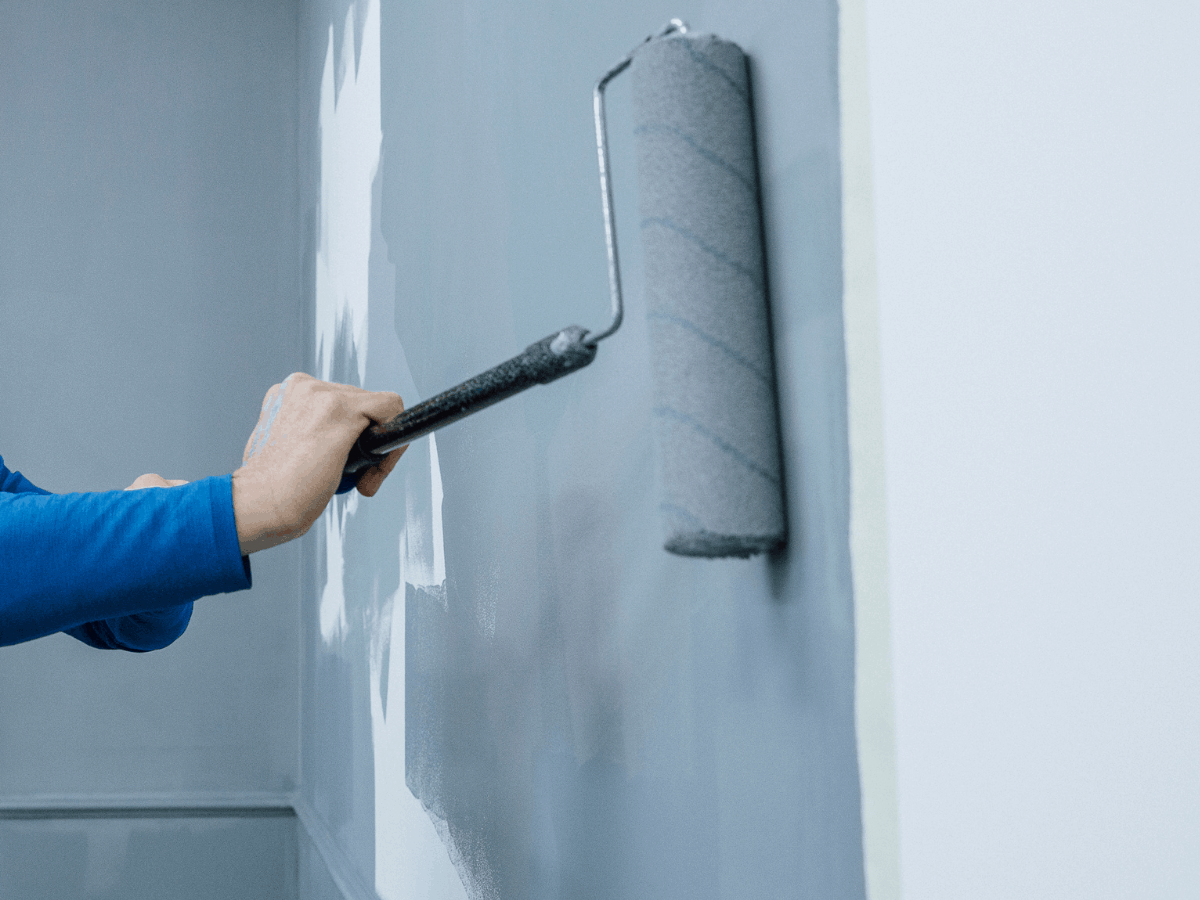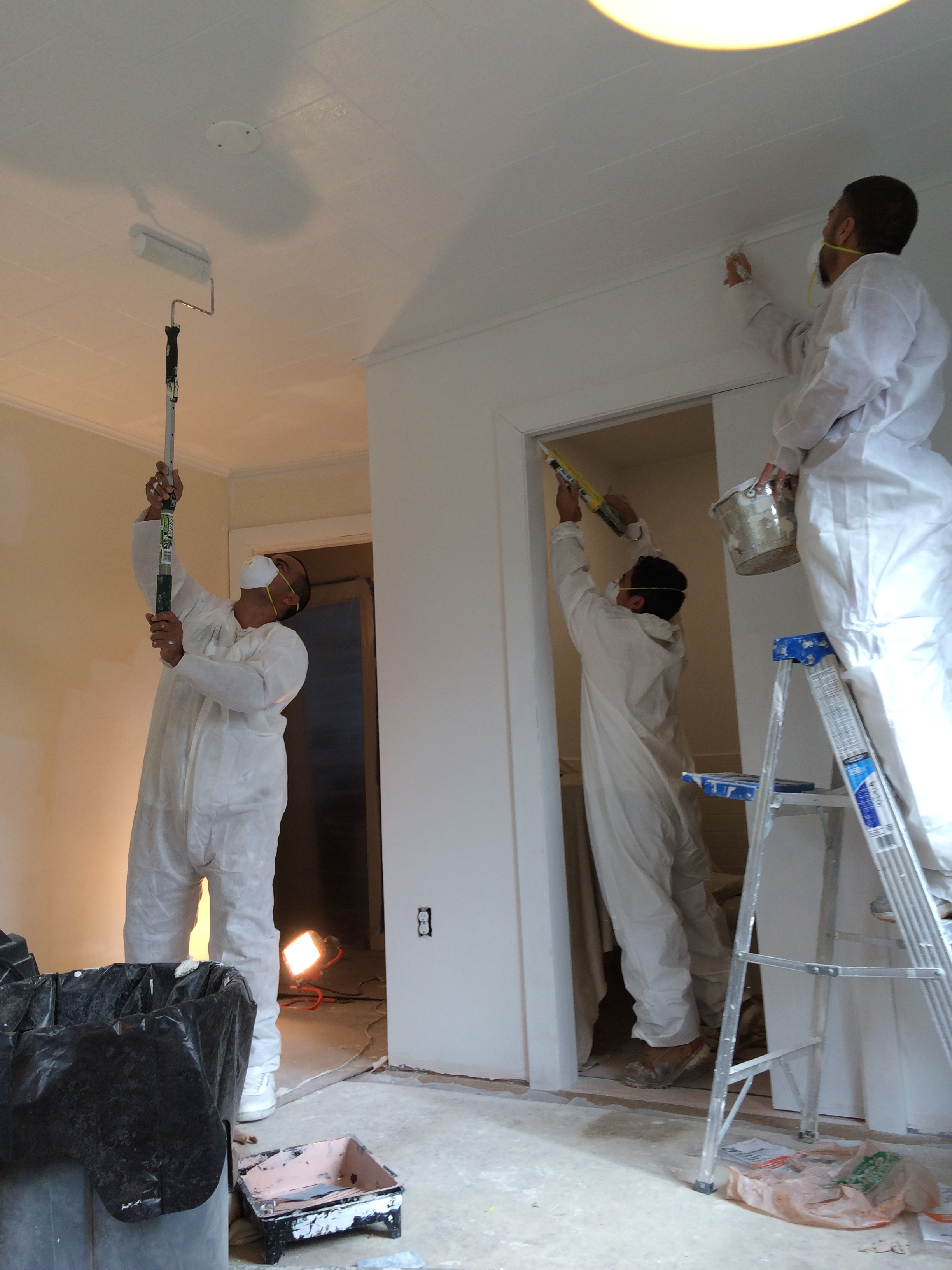Enhance Your Interior Decoration With Comprehensive Color Consultation
The assimilation of shade examination right into indoor style provides a special possibility to fine-tune and elevate the visual and emotional resonance of a room. By involving with an experienced color expert, you can navigate the complexities of color option, guaranteeing that your options not only complement architectural attributes however likewise reverberate with individual style and psychological impact.
Advantages of Color Consultation

Furthermore, shade assessment help in optimizing natural light and maximizing spatial understanding. Lighter hues can make an area appear more large, while darker shades develop an intimate setting. Cleveland Metro Painting Specialists. This calculated application of shade can dramatically affect the overall atmosphere of any type of indoor room
In addition, specialist specialists possess a comprehensive understanding of existing patterns and classic classics, making sure that the selected shades will certainly stay attractive gradually. This insight can conserve customers from expensive redesigns in the future. Shade examination equips clients by offering them with a clear vision and direction, promoting self-confidence in their style choices and ultimately leading to an extra successful and enjoyable indoor style outcome.
Understanding Shade Psychology
The relevance of color psychology in interior decoration can not be overemphasized, as it looks into the psychological and psychological effects that various colors can evoke in individuals. Shades can affect mood, habits, and also productivity, making them an essential factor to consider in any design task.
For example, cozy colors such as red, orange, and yellow are often linked with energy and heat. They can promote feelings of enjoyment and comfort, making them appropriate for social spaces like living areas or kitchen areas. Conversely, trendy colors like blue, environment-friendly, and purple have a tendency to stimulate calmness and harmony, making them suitable for bedrooms or reflection areas.
Furthermore, the use of neutral tones can produce a well balanced environment by permitting the bolder shades to stick out without frustrating the senses. Comprehending these emotional impacts allows developers to create areas that not just look aesthetically pleasing yet likewise advertise psychological health.
Integrating shade psychology right into indoor design includes a thoughtful option of hues tailored to the desired function of each area, ultimately improving the general experience for its owners. This awareness is vital for attaining a practical and unified indoor atmosphere.
The Shade Wheel Clarified
Understanding the connections in between tones is essential for effective interior decoration, and the color wheel works as a useful device in this procedure. The shade wheel, created by Isaac Newton in the 17th century, highlights the range of shades prepared in a circular style. It makes up main colors-- red, blue, and yellow-- that can not be created by mixing various other shades. Additional shades, developed by integrating primaries, include eco-friendly, orange, and purple. Tertiary colors result from mixing a key and a second color, resulting in tones such as red-orange and green.
The shade wheel helps developers comprehend the relationships between colors, consisting of complementary, similar, and triadic schemes. Corresponding colors, positioned contrary each other on the wheel, produce vibrant contrasts that can energize a room.
Using the shade wheel in interior style not just improves visual appeal yet likewise stimulates particular feelings and atmospheres, making it an essential referral for color consultation. go to the website Recognizing these relationships eventually encourages designers to produce spaces that are both practical and aesthetically captivating.
Selecting the Right Combination
Often, selecting the appropriate palette is a decisive factor in accomplishing an effective interior decoration task. An appropriate color design can unify a space, boost its attributes, and evoke preferred feelings. To More about the author start, consider the function of the space. Various areas serve different functions and require combinations that show their intended usage; for instance, peaceful shades such as soft blues or environment-friendlies function well in rooms, advertising leisure.
Light can significantly change exactly how colors appear, so it is crucial to analyze the space at various times of the day. An unified combination needs to complement these features, developing a natural look throughout the area.
When picking colors, use the 60-30-10 rule, which recommends that 60% of the area should be a dominant shade, 30% an additional shade, and 10% an accent color. This proportion makes certain equilibrium and visual rate of interest (Cleveland Metro Painting Specialists). Lastly, example shades on the wall surfaces prior to committing, as this allows you to see how the shades interact with one another and the total setting they create in your interior decoration project.
Working With a Color Consultant

When dealing with a color consultant, the procedure normally begins with a first assessment. Throughout this meeting, you'll review your vision, preferences, and the existing components in your space. The specialist will analyze your needs and might advise particular color schemes that straighten with your goals.
After establishing a direction, the specialist will certainly provide examples and aesthetic aids to aid you imagine the recommended my link color pattern. This step is vital, as colors can show up in different ways under differing illumination problems.
Furthermore, a shade expert can lead you in choosing corresponding home furnishings, art work, and accessories to harmonize with your selected scheme. By collaborating closely, you can accomplish a refined visual that boosts your insides and produces an inviting environment. Inevitably, the knowledge of a shade consultant can substantially enhance the total influence of your layout project.
Conclusion
In summary, detailed shade examination works as a crucial tool for improving interior decoration. By leveraging specialist knowledge of color psychology and spatial dynamics, a customized color scheme can be created to evoke particular feelings and develop an unified environment. This calculated method not only cultivates a natural layout story yet likewise reduces the threat of expensive redesigns. Ultimately, involving with a color specialist ensures a notified and aesthetically pleasing outcome, raising the general experience of the room.
By engaging with an experienced shade expert, you can navigate the intricacies of color choice, making certain that your choices not just complement building features but additionally resonate with individual design and mental influence. It consists of main shades-- red, blue, and yellow-- that can not be created by mixing various other colors.The shade wheel helps designers realize the relationships between colors, including corresponding, similar, and triadic schemes.When picking colors, use the 60-30-10 guideline, which recommends that 60% of the room should be a leading color, 30% a secondary shade, and 10% an accent color. By leveraging professional knowledge of color psychology and spatial dynamics, a customized shade scheme can be created to stimulate certain feelings and produce a harmonious atmosphere.